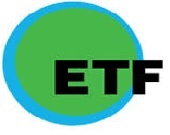“An ETF is a structure, not a strategy,” said Som Seif, founder of Claymore Investments, purchased in 2012 by BlackRock. He was addressing an afternoon roundtable on exchange-traded funds at the downtown offices of the CFA Society Toronto on November 28, 2013.
ETFs are gaining attention nowadays, he said, because “lower fee investment management is the current trend.” Trained as an engineer, Seif noticed early on in his financial career that “indexing tended to win out,” net of fees. “I don’t believe markets are efficient,” he said, nor does he think that market capitalization is necessarily the best way to invest “although I understand why it’s done.”
Seif posed a question to the audience: how can you add enough value to beat the exchange? “Ninety percent of an investor’s return comes from beta. It’s your allocation decision that will give a better beta,” he said. For example, the market might give 8 percent return and the client would pay 20 bps. A money manager might bring the return to 9 percent, but charge a 1 percent fee. “Is it worthwhile to pay 80 bps for that extra 1 percent?” he challenged.
When Seif entered asset management a decade ago, he saw risk management was the industry area that most needed changing. Claymore came in to the market, combining low costs and risk management. Fat-tail risk is, or should be, embedded in the product. Such risk uses capital, and the fund architect must be mindful of capital allocation. “Black swan strategy is hard to do as a stand-alone, so it needed to be embedded in the product,” he said.
In the early 1980s, the long-only form of money management gave way to equitization of capital. In the early 1990s the inefficiencies got squeezed out. Nowadays, he sees a balancing of active and passive management. An ETF is most easily set up with a fundamental, rules-based delivery mechanism whereas alternative (illiquid) investments such as real estate require in-depth knowledge of a particular niche.
The big pension funds CPP and OMERS, Seif pointed out, no longer allocate long/short money managers. “They hire their internal teams to go into illiquid environments, instead of just thinking about allocation.”
Seif touched on some liquidity forms such as long/short strategy and risk parity on multi-assets. He strongly prefers an unleveraged strategy, “for times when beta is trending against the market” and the investor wants market-neutral strategy.
An ace team of mentors led to Seif’s early success in the field of investment. Rob Arnott, former editor of the Financial Analysts Journal, and (according to Seif) “the best academic who can sell,” published an influential paper on fundamental indexing in 2004. Not long after, Claymore launched its first Research Affiliates Fundamental Index (RAFI) product. Arnott introduced him to the high-octane academic world that included Harry Markowitz, Jack Treynor, and others, who loved to debate the efficient market and other concepts.
Instead of comparing ETFs versus mutual funds he suggested a more worthwhile comparison would be strategy versus strategy or cost versus cost. According to Seif, a good thing about mutual funds “is that we can meet with the client” whereas “ETFs are totally book-based.” Some people are returning to mutual funds, he said, because they want the particular strategy, or they like a certain manager.
When setting up a fund, the ETF must register on an exchange. The biggest cost is sunk into the Transfer Agency (TA). The TA costs are kept in-house when it is a larger firm such as StateStreet or Mellon. The cost of financials, audits, and custodial obligations is higher for mutual funds. ETFs have capped management expense ratios.
Why aren’t more mutual funds switching to ETFs? Seif said it’s necessary to have a liquidity intermediary between the client and the fund. With discretionary active money management, “your portfolio might differ—having some uncovered risk—and then they must blow the spreads out.”
What should investors be wary of? “Value traps,” said Seif. He also alluded to irrational decision making that is studied in behavioural finance.
 The most disturbing recent ETFs trend, he said, is “innovation without thoughtfulness.” Companies continually put together new products and “throw them against the wall” like spaghetti, to see what sticks, and “look for the two or three products that pay off.” As an example, he cited a recent fund devised to invest in companies that take progressive stand on gay rights. “Sure, you can get buyers, but is that a sound investment strategy?” ª
The most disturbing recent ETFs trend, he said, is “innovation without thoughtfulness.” Companies continually put together new products and “throw them against the wall” like spaghetti, to see what sticks, and “look for the two or three products that pay off.” As an example, he cited a recent fund devised to invest in companies that take progressive stand on gay rights. “Sure, you can get buyers, but is that a sound investment strategy?” ª

